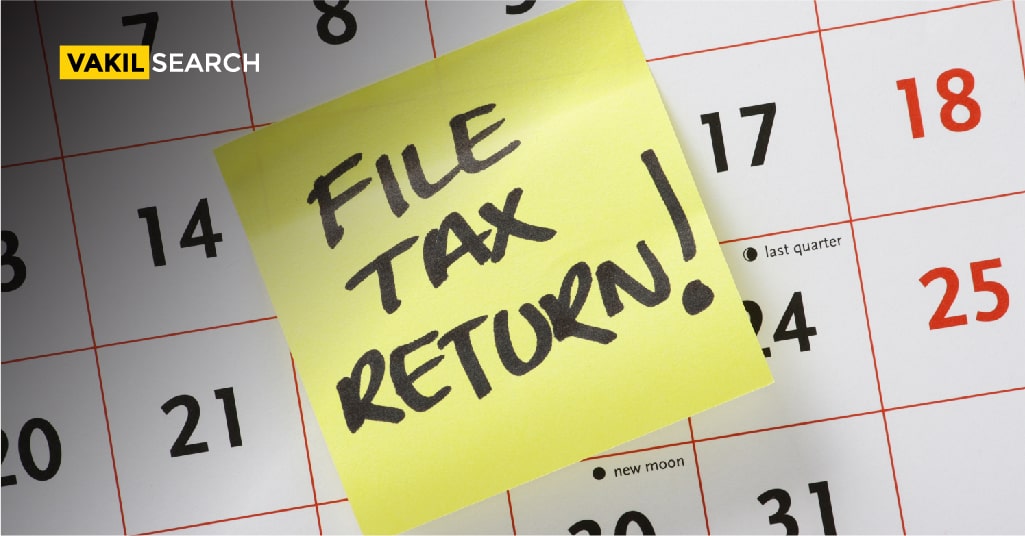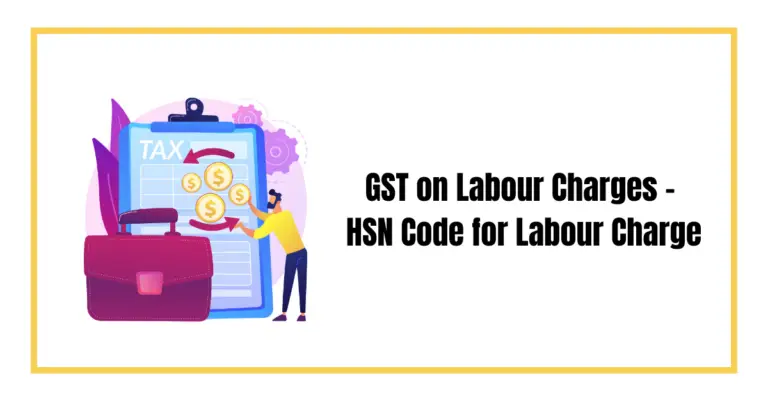The GSTR-1 filing due dates have been relaxed as a result of the ongoing COVID-19 pandemic. Here’s a look at the updated filing dates.
The switch to the GST (Goods and Services Tax) regime has drastically transformed India’s taxation system and economy. GST has helped bring numerous indirect taxes under one umbrella, making tax payments more straightforward. You Can Know more about GSTR-1 Filing Due Dates in 2024!
All GST-registered taxpayers who have an annual turnover of over ₹5 crores must file their GSTR-1 every month. GSTR-1 is a monthly return that summarizes a taxpayer’s sales (outward supplies). Some taxpayers even have the option of filing their GSTR-1 every quarter.
Here’s a quick look at everything you need to know about GSTR-1 filing, including the GSTR-1 due date and the GSTR-1 filing process.
GSTR-1 Filing Format
All GST-registered taxpayers must file their GSTR-1 either on a monthly or quarterly basis. GSTR-1 essentially contains details regarding outward supplies and sales, and the form contains 13 different sections, as follows –
| Section | Information Required |
| Tables 1, 2 & 3 | GSTIN, legal and trade names, and aggregate turnover in the previous year |
| Table 4 | Taxable outward supplies made to registered persons (must include even UIN-holders). |
| Table 5 | Taxable inter-state outward supplies to unregistered persons where the invoice amount exceeds ₹2.5 lakhs |
| Table 6 | Zero-rated supplies and deemed exports |
| Table 7 | Outward supplies to registered persons (including UIN holders) that are taxable, except zero-rated supplies and deemed exports |
| Table 8 | Nil returns, exempt and non-GST supplies |
| Table 9 | Modifications to taxable outward supplies are stated in tables 4,5, & 6 of the GSTR-1 return for previous tax periods (including debit notes, credit notes, refund vouchers issued during the current period) |
| Table 10 | Amendments to previous months’ taxable sales/supplies to unregistered businesses. |
| Table 11 | Details of advances received or adjusted in the current tax period and changes to information submitted in the previous tax period. |
| Table 12 | HSN-wise summary of outward supplies. |
| Table 13 | Documents issued throughout the month (must include the serial numbers of the invoices, credit notes and debit notes issued during the month). |
GSTR-1 Filing Exemption
All GST payers and business owners must file their GSTR-1 even if they do not have any turnover. However, the following individuals are exempt from having to file a GSTR-1 due date:
- Taxpayers who have opted for the composition scheme
- Input service distributors
- Suppliers who offer database access, online information, or retrieval services
- Suppliers who pay tax by themselves (Section 14 of IGST Act)
- Non-resident taxable individuals
- Taxpayers collecting TCS
- Taxpayers deducting TDS.
What Is the GSTR-1 Filing Due Date?
Businesses with annual turnover of up to ₹5 crores can file quarterly. Businesses having an annual turnover of more than ₹5 crores, on the other hand, must file monthly. The GSTR 1 due date has been relaxed as a result of the ongoing COVID-19 pandemic. Here’s a look at the updated filing dates.
| Return | Turnover Limit | Period | Due Date |
| Monthly GSTR-1 |
Greater than 5 crores
|
January 2024 | 11 Feb 2024 |
| February 2024 | 11 March 2024 | ||
| March 2024 | 11 April 2024 | ||
| April 2024 |
26 May 2024 (Extended Deadline) |
||
| May 2024 |
26 June 2024 (Extended Deadline) |
||
| June 2024 | 11 July 2024 | ||
| July 2024 | 11 August 2024 | ||
| August 2024 | 11 September 2024 | ||
| September 2024 | 11 October 2024 | ||
| October 2024 | 11 November 2024 | ||
| November 2024 | 11 December 2024 | ||
| December 2024 | 11 January 2024 |
The extended due dates from June 2024 and onwards for GSTR-1 are yet to be notified by the CBIC, as of 21 July 2024.
The CBIC has announced that no late fees will be levied if the GST return filing within 30 days of the original due date for the quarter ending 31 March 2024. The government has further relaxed the levy of interest for non-payment, short payment, or delay in payment of tax dues for April and May 2024.
How Do We File GSTR-1 Online?
Step 1
First and foremost, users have to log in to the official GST portal
Step 2
From the homepage, users should then land on Services>>Returns>>Returns Dashboard
Step 3
Thereafter, you will see an option to File your GST Returns. Choose the appropriate assessment year and month
Step 4
Next, you must determine whether you want to prepare the return online or offline
Step 5
Provide details regarding outward supplies. The figure inputted must include the aggregate turnover
Step 6
After which, you will have to fill in the invoices as required. The various GSTR-1 invoices include:
- Invoices 4A, 4B, 4C, 6B, and 6C, for B2B invoices
- Invoices 5A and 5B, for B2C invoices
- Invoice 9B, which are registered credit or debit notes
- Further, Invoice 9B, for unregistered credit or debit notes
- Invoice 6A, for export invoices
- BC invoices less than ₹2.5 lakhs
- Invoices 8A, 8B, 8C, and 8D, for nil-rated supplies
- Likewise, Invoices 11A(1) and 11A(2), for advances received
- Invoices 11B(1) and 11B(2), for the adjustments of advances
- HSN summary of outward supplies
- Issued documents
Step 7
You can finish the process by agreeing to the declaration at the end.
GSTR-1 filing is not everyone’s cup of tea. It is a complicated and tedious task, best entrusted with GST specialists such as Vakilsearch. Get help from us today!
Easily calculate GST with our GST calculator online. Ideal for all your GST calculation needs in India.
Nil GSTR-1 Filing via SMS
As of July 2020, taxpayers have the option of filing NIL GSTR-1 via SMS in the following manner:
SMS Format for NIL GSTR-1 Filing: NIL>>space>>R1>>space>>GSTIN>>space>>Tax period (MMYYYY)
- Send an SMS in the above-mentioned format to 14409
- Upon sending the message, you will receive a 6-digit code
- To confirm the GSTR-1 filing, you must then send the following SMS to 14409 CNF>>space>>R1>>space>>6-Digit-Code
- After successful validation of the request, you will receive an acknowledgement SMS to your registered mobile number
- Users can send the following SMS to 14409 for assistance with the GSTR-1 filing process: HELP>>space>> Return type (R1).
Interests and Penalties for Not Filing GST
The GST regime requires dealers to file their GST returns on time to ensure compliance. Non-compliance leads to the levy of interests and penalties. Here is a bird’s view of the same.
FAQs
Is Gstr 1 due date on the monthly filing date?
Yes, GSTR-1 is due on the monthly filing date, which is the 11th day of the succeeding month for regular taxpayers.
What is Gstr 1 and 3B due date?
The due date for GSTR-1 is the 11th day of the succeeding month for regular taxpayers, and the due date for GSTR-3B is the 20th day of the succeeding month.
What is the time limit for filing Gstr 1?
The time limit for filing GSTR-1 is within 11 days from the end of the succeeding month for regular taxpayers.
Is Gstr 1 monthly or quarterly?
GSTR-1 can be filed monthly or quarterly, depending on the taxpayer's annual turnover.
Is Gstr 1 and 3B monthly or quarterly?
GSTR-1 can be filed monthly or quarterly, depending on the taxpayer's annual turnover, while GSTR-3B is filed monthly.
What is Gstr 1 and 2 and 3B?
GSTR-1 is a return that contains details of all outward supplies i.e sales, GSTR-2 contains details of all inward supplies i.e purchases, and GSTR-3B is a summary return that contains details of all outward supplies, input tax credit and tax liability.
What is Gstr 2A and 2B?
GSTR-2A is an auto-populated return that contains details of all inward supplies i.e purchases, while GSTR-2B is a static statement that contains details of all inward supplies i.e purchases.
What is the difference between Gstr 1 and 3B?
GSTR-1 contains details of all outward supplies i.e sales, while GSTR-3B is a summary return that contains details of all outward supplies, input tax credit, and tax liability.
Who Cannot file Gstr 1?
Taxpayers who are registered under the composition scheme, input service distributors, non-resident taxable persons, and persons liable to collect TCS cannot file GSTR-1.
What happens if Gstr 1 is not filed?
If GSTR-1 is not filed, the taxpayer will be liable to pay a late fee of Rs. 50 per day of delay, subject to a maximum of Rs. 5,000.
How is Gstr 1 late fee calculated?
The late fee for GSTR-1 is calculated at a rate of Rs. 50 per day of delay, subject to a maximum penalty of Rs. 5,000.
What is the turnover limit for GST return?
The turnover limit for GST return is Rs. 20 lakhs for businesses providing services and Rs. 40 lakhs for businesses selling goods.
What if GST return is below 1.5 crore?
If the GST return is below 1.5 crore, the taxpayer can file GSTR-1 on a quarterly basis
What is the turnover limit for Gstr 1 quarterly?
The annual turnover limit for availing GSTR-1 quarterly is Rs. 1.5 crore.










